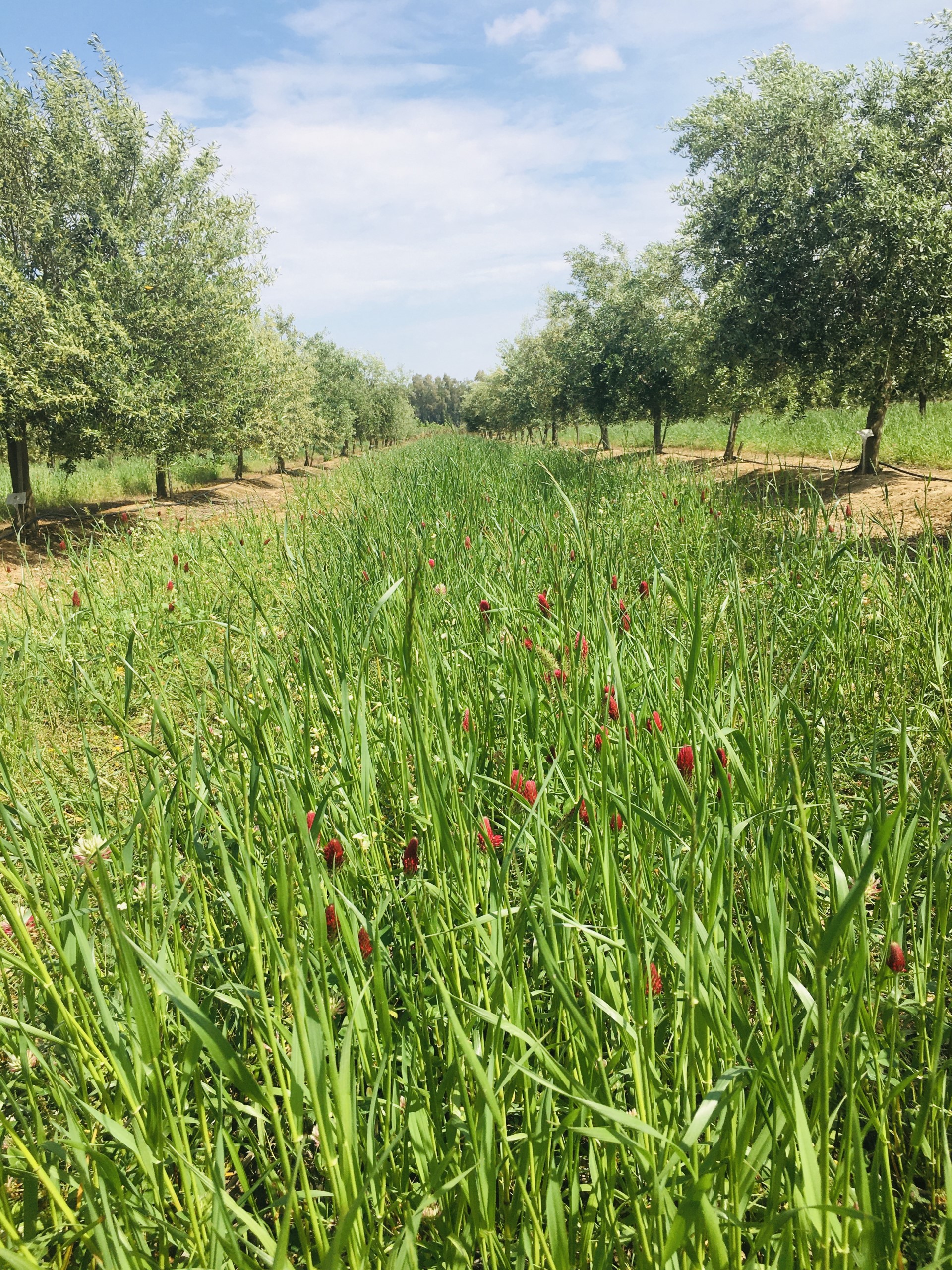
Permanent groundcover plants
 General information
General information
Fortunately, the use of alternative production techniques that allow much more sustainable farming activities are increasingly more common.
The use of permanent groundcover plants has been described as a sustainable alternative to the management of the soils in woody crop plantations, offering numerous benefits such as the reduction of runoff waters on plots minimising erosion, the contribution to maintenance and/or improvement of the physical characteristics of the ground, especially structure, porosity and water infiltration capacity, thus preventing or reducing compaction of the soil. Groundcover plants play a very important role in the dynamics of the soil’s organic matter, reducing its losses and promoting fixation. In addition to this, groundcover plants can help control adventitious plants that are hard to manage and also some species of nematodes that can damage plantations.
There is a large range of existing groundcover plants: in Mediterranean environments, annual meadow species with self-planting capacity are traditionally used to improve pastures and an alternative to be seriously taken into account. At CICYTEX we aim to value our knowledge and expertise in the design of biodiverse combinations and their applicable management techniques with the purpose of offering sustainable solutions to the agricultural industry.
The following are the main features of meadow species which make them so adequate to be used as groundcover plants:
Widely-studied species with adaptation capacity, well-known behaviour dynamics and response to management.
Large range of species and varieties such as gramminaceous or leguminous plants, which allow for a design of biodiverse combinations that can adapt to the specific conditions of each plot and to the objectives of the groundcover itself. The available seeds in the market include a multitude of species and varieties of the Trifolium, Medicago, Biserrula, Ornithopus and Lolium genuses, which offer a large range of options for the design of groundcovers. Groundcovers that include leguminous plants offer the additional benefit of adding N by way of biological fixation.
Promotion of the system’s resistance through the level of biodiversity associated to the use of numerous species and varieties which, together with the endurance of many of the seeds, encourage persistence of the groundcover through time.
Self-planting capacity, which can avoid working on the soil of the plantation rows for long periods of time, thus helping organic matter to become integrated into the ground.
Other uses of groundcover plants are environmental restoration and recovery and recovery of soils that have undergone engineering work, or have been installed with solar power plants, etc.
 Groundcover plants at CICYTEX
Groundcover plants at CICYTEX
Since 2018, CICYTEX researchers have been working on the design and agronomy of groundcover plants to introduce them in various demonstration plots with the purpose of providing answers to an increasing demand of information by the agricultural industry. Proposals of permanent groundcover plants based on meadow specimens can be found in various permanent crops and plantation distribution patterns.
 Groundcover plants as part of the ecological programmes or eco-schemes of the future Common Agricultural Policy
Groundcover plants as part of the ecological programmes or eco-schemes of the future Common Agricultural Policy
Eco-schemes are one of the main news of the future Common Agricultural Policy that will be applied in 2023. Each Member State shall include a catalogue of voluntary practices of their Strategic Plan for increasing farm sustainability in important aspects such as soil protection, their increase of their capacity as carbon sinks, biodiversity preservation or the reduction of emissions.
Eco-scheme 7 proposes Practices for a better preservation of soils using live groundcover plants in woody crops, so we expect a major expansion of their use in the next few years.






